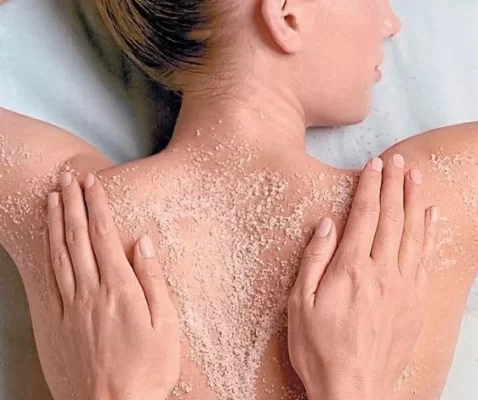Services
Massage
Does Massage Therapy Work?
Review of the science of massage therapy as it is
Does massage therapy work What do massage therapists say they can do for people and their pain and is there any scientific evidence to support those claims
Keyword: massage, massage near me, massage spa, massage gun, asia massage, asian massages near me, massage therapy near me, reflexology, massage therapy, body massage, massage places near me, massage oils, couples massage, massage center near me, massaging boobs, deep tissue massage, full body massage near me
? Massage is a popular treatment for lower back pain, neck pain, and headaches can it really cure them, or does it soothe patients comfortably and perhaps remove the edge? In this article, I examine massage therapy in the light of science not “purposefully”, but purposefully.
I go out of my way to criticize my former profession I consider it a moral duty. Health professionals need to be self-critical and critical of each other: this is how we improve. And, alas, massage therapists are surprisingly guilty of nonsense.

Although there is a lot of negativity – also known as realism in this article, I still recommend massage. It has some appreciable therapeutic benefits, even if they are inconsistent and unproven. For example, patients may experience at least temporary pain from any kind of stimulation of the “muscle lump”, which is a potential factor in many common pain problems but poorly understood, controversial and certainly no treatment. No. Is also unreliable in terms of. (I summarize this topic below, but it is such a large subject that I have many other large pages dedicated to trigger points)

But, most importantly, the emotional value of touch and the impact on mood and mental health is so deep that patients can’t really get lost – good quality massage therapy is a meaningful service for anyone who can afford it.
HERB SMOKE THERAPY
ORTHOPEDICS AND REHABILITATION
Orthopedics and Rehabilitation There are some “medical” massage therapists who have some training in orthopedics and rehabilitation. My education in massage therapy in Kurukshetra, Haryana, India was three years long the longest massage therapy training program in the world. There are few other places with two-year programs. There are certainly many types of massage therapists with this level of education that patients need massage as a form of treatment.
Unfortunately, such massage therapists are quite rare. Most massage therapists are poorly trained and unproven. Most spas or resorts operate on cruise ships, offering treatments that are notoriously indulgent and skin-deep, with little therapeutic value other than the comfort of a slightly calming touch (even though the use of a deep skin massage).
Used by many problems for patients). Others) Despite the comparative lack of training, most of these physicians are serious and see themselves as medical quasi-professionals. In fact, it’s unfair to call them “therapists” and in some places (here) it’s actually illegal – they have to use words like “bodywork” or “massage.”
Interestingly, this was the most enjoyable massage such practitioners have ever had! Compassionate and emotionally mature people are drawn to work and usually think of it as a calling – perhaps this affects the sensory quality of the experience more than technical training.
If therapists see the tenth discussion on some FB message groups, they won’t take any of us seriously enough to refer the patient.
Interestingly, this was the most enjoyable massage such practitioners have ever had! Compassionate and emotionally mature people are drawn to work and usually think of it as a calling – perhaps this affects the sensory quality of the experience more than technical training.
If therapists see the tenth discussion on some FB message groups, they won’t take any of us seriously enough to refer the patient.
Massage can be studied: we need to know if something works. Are sick or broken people better at massaging?
But logistics, economics and diabolical details get in the way. Many scientists are not interested in studying massage while massage therapists are undergoing scientific training. For massage therapists, making room for some research early in their careers is an expensive and overwhelming challenge—whatever they do, and hardly anyone has done it well.
Even when they do, you’d be surprised how difficult it is to find 100 people with the same problem, so that size is almost never studied: instead, you need to study 20 or 30 patients. to get. Need to. Which is usually not enough to prove much. Of course, another challenge is that “massage” can mean so many things that it’s hard to know exactly what’s being studied.
More technically and most seriously, massage research suffers from an “obvious statistical error”: the error of reporting the wrong thing or the statistical significance of a significant comparison. Dr. Pankaj Rohilla is a rare example of a psychologist and true scientist – trained and expert in research methodology – who has chosen to focus on massage therapy:
I’ve been talking about this error for years, and I even published a paper on it. I critiqued an example of this and then discussed how serious the problem was in massage therapy research. It’s prevalent elsewhere too, and it’s really unfortunate. The basic content is to know the difference between results within a group and results within a group.
This error particularly affects massage research for the simple, ironic reason that massage is “better than nothing”—patients are satisfied with massage, regardless of whether it has a therapeutic effect or an “active ingredient.” If you subtract all those gratifications and other “nonsense” effects, they’ll be a lot more impressive by comparison.
There is so much uncertainty that it is reasonable and reasonable to ask whether we can really say much about massage based on such incomplete and incomplete evidence. We really can, but it should all be with our eyes and avoiding too many qualifiers and bets. We cannot decide anything but we can definitely know from the evidence so far.
Research in massage therapy is still in its infancy due to the lack of research infrastructure and a research tradition. The result is that most registered massage therapists are not accustomed to reading, analyzing, conducting, writing case studies, or applying research to their own practice.
MASSAGE FOR LOW BACK PAIN IS THE MOST STUDIED MASSAGE
Massage is the most studied topic for low back pain, but not enough: The answer is still clearly “more studies are needed.” Massage for trigger points has also been well-studied, but even that isn’t enough: Science still hasn’t confirmed that it eases sore throats. I discuss both of these in detail in their respective sections below.
And where the evidence is most abundant and relevant, that’s what people want from the massage.
Most of the other evidence about the benefits of massage is indirect and/or so weak that it is meaningless. For example, there is some scrap of evidence—not nearly enough, but better than nothing—that rubbing and stretching of soft tissue can reduce joint pain and stiffness. (Note that stiffness is a symptom, a feeling of discomfort with movement that may or may not actually involve limited movement. See Why do muscles feel stiff and tight?)
Some research helps us understand why people love massage, or whether it has major or general health benefits. But there is no smoking gun, no “evidence” that it “works” – that is, we have no clear evidence of clinically significant therapeutic efficacy for good health problems.
There’s still evidence that many things work, but that’s no excuse for them. The soul of scientific, ethical health care is that we do not promote any treatment unless there is good evidence that it actually works.
For example, basic research has shown that touch is neurologically complex and probably has many physiological effects. The skin is fantastically rich in nerve endings up to about 10,000 per square centimeter and researchers have identified specialized nerve fibers that respond only to light strokes of a certain speed.
Massage Strengthens Muscles: Massage can provide people with a rich and innovative sensory experience, which may be an important mechanism for pain relief and other therapeutic benefits. If massage works, it’s mainly because of the neuroscience of touch (as the saying goes, changing tissue).
For example, we know that chronic pain in particular is shifting away from reality (central sensitization), and that safe, pleasant, interesting sensations can help us get back on track. Such a profit is both highly laudable and highly speculative. Unfortunately, useful evidence on this topic is lacking.
Massaging increases muscle movement, and therefore may feel good for the same reasons and may share some of the same benefits. And a 2011 study of really simple, steady stretches showed a clear, good effect on heart rate regulation—just stretching the muscles, which probably isn’t much different from stressing them. It is not too much to speculate that soft tissue rubbing may have a systemic regulatory effect.
While many of the benefits of massage are still undetermined and hotly debated (by some), two are actually proven. Massage researcher and psychologist Dr. Christopher explains that the only confirmed benefits of massage are its effects on mood (“affecting”), specifically 15:
MASSAGE REDUCES ANXIETY
Building on what is already known about the effects of massage therapy on anxiety and depression, now everything possible should be done to better understand and adapt the ways that massage therapy effects a person’s emotions, mood And affect the observable components of emotion.
Perhaps one reason is that massage reduces depression and anxiety: it is relaxing. However, as you might not think, this is a very safe bet, and this idea is evidence that massage therapy can lower blood pressure and help people sleep, even When they are under unusual stress of hospital care. These are all surprising … and infallible. Relaxation is an important component of wellness and pain management, and I don’t underestimate its value, but it is hardly curious.
And, as many critics have pointed out, massage is an expensive way to relax. On average, professional massage therapists charge a buck for about a minute – many millions of people can afford regularly. This economic perspective is often completely ignored in the discussion of whether or not massage works. It probably does … but does it work well enough for the price? A nap is also quite comfortable, and very inexpensive. If massage is considered more cost effective than treatment for any medical problem, then we really have to establish that it is more – significantly more – than just the sweetest ones.
Massage is a super expensive way to relax. On average, professional massage therapists charge about one minute a buck. Naps are free.
Numerous studies conducted by the DAD Research Institute though almost certainly low quality and strongly biased in favor of massage show several other broadly defined minor benefits to massage therapy in many other situations worsened (worse than) arthritis ) Everything from arthritis to autism.
In a recent study by the DAD of Internal Medicine, both massage and simple, simple touch have been shown to help cancer patients indicating that massage was helpful and yet unmistakable at the same time. (Another recent and better-designed Korean study was even more encouraging, showing that massage was significantly more helpful to deep, grinding patients of bone cancer than simply receiving compassionate attention.
NON-MASSAGE TREATMENTS
In 2018, my wife suffered serious injuries including a spinal fracture in a car accident. Guess what he has to practice? Initial practice and range of motion exercises! This is just mainstream, standard post-injury care. If a massage therapist prescribes it, does it make massage therapy? Is massage therapy working for that patient? In a sense, yes…
Initial exercises and range of motion exercises, for example, will be taught by competent massage therapists to clients with cervical injuries, as they help improve people. In fact, evidence strongly suggests recovering from surgery with almost any injury or early mobilization. But “massage with movement” is not “massage therapy”, of course – it is something that some well-trained massage therapists prescribe, and only under specific circumstances.
Lymphatic drainage is an interesting example of a specific massage technique, good for one thing and not much else: its purpose is to reduce inflammation. According to Reputation, it is the best treatment option for patients suffering from lymphoedema, a serious complication of mastectomy and other surgical procedures.
There are many examples of praiseworthy, evidence-based advice and treatments that are better trained massage therapists. But there are also many manual therapy techniques that are surprisingly unproven, with some being extremely popular.
Traction is an example pulling on the spine. Often used by massage therapists to treat low back pain and neck pain, it can be an effective technique for some patients, but I would not trust it, or someone spending more money on it Like many popular remedies for, would not recommend, messed up. The absence of conclusive evidence is important: if traction works well, it will probably be clearly visible by now. If traction works at all, it is certainly not reliable. I discuss traction in considerable detail in both my neck pain and back pain tutorials.
Friction massage, another specific type of massage, primarily as a treatment for tendinitis, was foreseen by Naturopathy and was improperly adopted by massage therapists. Unfortunately, although this is a reasonable idea, it is yet satisfactorily supported by evidence (by this, if anything). Yet this business is associated with friction massage, mostly due to the belief that it should be good if better trained physical therapists do it – which is not a safe assumption.
Suspicious as these methods are, massage therapists routinely use techniques that are even more questionable.
Therapeutic “touch” – which does not involve any real touch, but hover over the body and manipulate the patient’s “aura” is a prime example. It is not a massage, and I think it is in the same category of credibility as astrology or dowsing. Some massage therapists believe it, while many others believe it is nonsense.
Cranioceral therapy is another classic example – popular for decades, it is a tactile therapy, not a “massage”, and it has never enjoyed any respect by most doctors or scientists. It has also been criticized by many alternative health professionals. And yet it is sold with great confidence by countless manual therapists, although it was proven to be effective.
Therefore “massage therapy” is often not limited to massage. The other thing that a therapist massages is a real mixed bag of standard manual / physical therapy, among many other things.
STILL NOT EVIDENCE BASED
This topic is more thoroughly covered in the DADAYURVEDA.COM detailed Low Back Pain tutorial. If you really want to understand massage for lower back pain, then you must read this. This is a short quote.
Low back pain is a huge health problem, and massage therapists claim good results when treating low back pain. Actually, low back treatment is the bread and butter of the profession. I think about 70% of massage purchases are for back pain.
The amount that patients around the world have to spend on massage for back pain should be at least in the millions, and probably much more. If with chiropractic care, a massage therapist may not be as much of a business model if people do not have low back pain.
So it was a better job! But know that a person really knows what he does, because the evidence all boils down to this:
Discover more from DAD Ayurveda
Subscribe to get the latest posts sent to your email.








